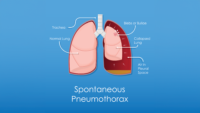Self-care combined with organizational support can aid prevention and resilience.
Takeaways:
- Skilled nursing facility (SNF) nurses caring for older adults experience a variety of resident care and organizational challenges, which may increase their risk for developing compassion fatigue.
- In recent research, SNF nurses describe symptoms of compassion fatigue and the impact of unresolved compassion fatigue on their professional and personal lives.
- Combining individual self-care efforts with an organizational resiliency program can assist in reducing the risk of compassion fatigue among SNF nurses.
Nurses in all care settings use compassion, the essence of providing care, to connect with patients. The Professional Quality of Life (ProQOL) model defines the positive feelings of providing care as compassion satisfaction and the negative feelings as compassion fatigue (CF). According to the ProQOL model, CF consists of burnout and secondary traumatic stress (STS).
Burnout involves negative feelings about the work environment and is characterized by emotional exhaustion, depersonalization, and reduced personal accomplishment. It’s described as high levels of cumulative stress associated with reduced resiliency and increased susceptibility to CF. Burnout and CF are closely related and have similarities in etiologies, triggers, and symptoms. A key element common to both is emotional exhaustion, but empathy and compassion are central to CF; whereas cumulative work stress is central to burnout.
STS is associated with work-related trauma and is induced by fear. It develops when someone is exposed to the trauma of another person and is emotionally affected by secondary exposure to this trauma.
This article reviews an interpretive phenomenology study of RNs working in skilled nursing facilities (SNFs) and offers suggested individual nurse and organizational actions to help mitigate CF.
Compassion fatigue and skilled nursing facilities
Nurses who work in SNFs face a variety of care and organizational challenges that may increase their risk for CF. For example, they may care for residents with multiple co-morbidities and cognitive and emotional issues, as well as residents who’ve lost function and independence. These nurses also must provide end-of-life care and may experience guilt if they’re unable to help a resident. In addition, caring for residents in an SNF is physically strenuous, and nurses may work for an organization with limited resources and little staff support.
Current literature supports the hypothesis that practice settings can increase the risk for CF as well as its severity, but more research is needed. At the time of this study, I found no research inclusive of CF within the SNF setting. This study was supported by the ProQOL model and conducted to understand the experiences of nurses who care for SNF residents and the factors that contribute to their CF risk. This understanding can help organizations and individual nurses develop interventions to reduce CF risk and overcome its negative effects.
Participants
After Institutional Review Board approval, public listings were used to identify SNFs and their nursing directors and administrators. I shared study recruitment fliers with these leaders, who distributed them to potential study participants, RNs who had experience caring for older adults in SNFs for at least 1 year.
Over 2 months, I collected data from eight participants via three semi-structured, face-to-face, audiotaped interviews, each lasting about 1 hour. To allow the nurses to describe themselves personally and professionally, I asked them open-ended questions, such as “Tell me a bit about yourself and your current role in nursing.” I then asked each nurse to describe what CF means to them. Subsequent interviews focused on key points from previous interviews. (See Sample size and qualitative research)
Sample size and qualitative research
In qualitative research, a small sample size is less important than the degree of saturation (in this case, no new information and no new contributors or symptoms of compassion fatigue coming forward) because the goal is to understand the experience or phenomenon, not generalize the findings. In this study, saturation was reached with eight participants from multiple SNFs.
Establishing trustworthiness in qualitative research ensures scientific rigor. Four criteria of trustworthiness—credibility, objectivity, confirmability, and auditability—established rigor and allowed readers to assess the value of the findings.
Findings
The research study findings are described by four shared meanings:
• I feel conflicted and that causes my CF.
• CF manifests physically and emotionally.
• CF is infused in every aspect of my life.
• We are trying to cope with CF.
I feel conflicted
Emotional conflict developed as a result of the challenges related to caring for residents and their families (participants described daily nursing care as draining, exhausting, taxing, and physically and emotionally demanding), the work environment, the nature of the nurse–resident relationship (close connections formed over long periods), and the routine experience of resident death. As a result of work constraints, many participants described feeling task-oriented because they had to “do more with less.” Most of the RNs expressed sadness and frustration when they described their work environment, which included the busyness of their daily tasks, staffing ratios or nursing shortages, limited resources, and lack of support from their management team.
The participants described having close relationships with residents and being emotionally invested, suggesting an increased risk for professional boundary issues. Symptoms of CF were compounded when residents they were close to died. One participant described her conflicting feelings of frustration and sadness: “But, you know, usually, it’s the ones that require the most attention or the ones that [were] most combative, whatever, that I had to be the most careful of that I cry over the most.” The participants felt energized when helping dying residents but sad when they died. They also expressed the lack of grief support and of being unable to say goodbye. To avoid grief, one RN said, “…[Y]ou come to a point where you harden your heart so much not to feel that…then you distance yourself, and you don’t form these relationships with people you should form relationships with, you know—as a part of your protection.”
Physical and emotional manifestations
Participants frequently expressed feeling guilty about a perceived loss of compassion that resulted from being emotionally distant from residents. They reported physical illnesses (headaches, GI discomfort, sleep disturbances) and emotional issues (sadness, worry, frustration, feeling scattered at work, diminished compassion, and guilt).
CF is infused in every aspect of my life
Respondents described how the emotional and physical results of providing care influenced their personal and professional lives. They noted losing interest in social activities, and some even isolated themselves from family or friends. Participants described how work-related thoughts and worries frequently interfered with activities of daily living. Their CF had a detrimental effect on their work performance and willingness to continue working in an SNF. During the study, three participants chose to seek employment in another care setting.
We’re trying to cope
The nurses described using various coping strategies, including spirituality, positive self-talk, prayer, sleep, journaling, and meditation. However, they expressed the need for additional support. One participant described rationing her compassion based on what she felt she had left.
All of the participants expressed a desire to make a difference in the lives of their residents. When they felt they couldn’t make a difference because of work constraints or the resident’s deteriorating condition, they described experiencing CF symptoms.
Interventions: Individual and organizational actions
The study results indicate a need for intervention strategies to prevent CF and support nurses during and after stressful events. Individual nurse self-care coupled with organization programs can help nurses build resilience, process grief, and manage stress.
Nurses’ actions
Individualized self-care can help reduce nurses’ CF risk. Each nurse’s experiences, preferences, and beliefs are unique and will dictate their choice of self-care activities, which can include everything from practicing mindfulness, gratitude, and yoga, to journaling, listening to music, reading positive affirmations, taking a news or social media break, staying hydrated, sleeping at least 7 hours a night, spending time outside, exercising, helping others, socializing, letting go of perfectionism, and participating in hobbies. (See Be mindful.)
Be mindful
When you’re experiencing physical or emotional exhaustion, mindfulness (noticing the present nonjudgmentally) is a self-care option that requires little energy. It can be practiced anywhere, anytime, by anyone.
Here are a few examples:
• During hand hygiene, focus on the feeling of your palms against one another and draw your attention to the soap and water running through your hands.
• During any task, take slow, deep breaths to focus on the present, acknowledge your feelings, and focus on what you’re doing.
• When walking from one patient’s room to the next room, acknowledge your current emotions while feeling your feet touch the floor.
• When practiced during meditation, mindfulness is achieved by purposefully paying attention to your thoughts.
Mindfulness not only can improve mental and physical health, but it also can increase your ability to relax, elevate your self-esteem, and enhance your memory and learning.
One of the biggest challenges to self-care is practicing it consistently. Like any new habit, consistency and commitment can be difficult. Create a self-care contract and share your goals with a peer, family member, or self-care buddy to help you adhere to well-being practices.
Organizational actions
Organizational efforts to help reduce CF risk include adequate staffing ratios, CF and professional boundary education, routine shift breaks, permission to take personal time off, management team assistance with challenging resident situations, debriefing after stressful events, and self-care measures (such as providing a dedicated relaxation room).
Grief preparedness training and support can improve the experiences of nurses caring for residents at the end of life. Steps to help staff process their grief after a resident dies include creating a memory board; lining the hallway as the deceased resident is transported out of the facility; or offering a nondenominational room blessing, in which a small ornamental butterfly is left on the nightstand. These are all ways to honor the deceased and provide staff with an opportunity for closure.
The Cleveland Clinic initiated Code Lavender to help staff experiencing a stressful event. Support includes being present for the colleague, offering individual or team assistance, event debriefing and follow-up, and complementary therapies. An actual Code Lavender kit with self-care items can be presented to the nurse after the event.
Organizations also should consider implementing programs to address the specific challenges related to gerontological nursing, as well as CF education, information about positive coping and resiliency skills, and self-care strategies.
Managing stress
Caring for older adults in SNF settings places nurses at increased risk for developing CF. (See Research takeaways.)
Research takeaways
Nurses who participated in the interpretive phenomenology study described conflicting feelings, the factors that affect their desire to leave the SNF setting, as well as compassion fatigue symptoms.
Conflicting feelings
• frustration with challenging residents, while also experiencing significant sadness when they died
• nature of the nurse–resident relationship
• resident and family challenges
• routine resident death
• work environment
The prolonged nurse–resident relationship led to feelings of emotional investment with residents. Despite feeling energized when they provided care during the end-of-life process, SNF nurses expressed the need for a formal grief support program and time to grieve.
Factors affecting retention
• dissatisfaction with working conditions
• emotional and physical exhaustion
• lack of supportive leadership
• limited resources
Compassion fatigue symptoms
• detachment from residents
• emotional distress
• loss of compassion
• physical illnesses
• work-life imbalance
Overall, SNF nurses expressed the need for positive relationships and connections with patients, families, and colleagues.
The ramifications of CF include diminished nurse quality of life, reduced care quality, and leaving the profession. Combining individual self-care strategies with an organizational resiliency program can address the specific needs of SNF nurses and reduce their risk for CF, resulting in nurses who are prepared to manage the inevitable stress that accompanies caring for residents in these settings.
Marlene M. Steinheiser is the director of clinical education at the Infusion Nurses Society in Boston, Massachusetts.
Acknowledgements
Grants from the University of Arizona College of Nursing and the University of Arizona Foundation–Roie J. Levy Geriatric Nursing Award and Sigma Theta Tau–Phi Pi chapter supported this research project.
References
Figley CR. Treating Compassion Fatigue. New York, NY: Routledge; 2002.
Kolthoff KL, Hickman SE. Compassion fatigue among nurses working with older adults. Geriatr Nurs. 2017;38(2):106-9. doi:10.1016/j.gerinurse.2016.08.003
Melnyk BM, Kelly SA, Stephens J, et al. Interventions to improve mental health, well-being, physical health, and lifestyle behaviors in physicians and nurses: A systematic review. Am J Health Promot. 2020;34(8):929-41. doi:10.1177/0890117120920451
Nolte AG, Downing C, Temane A, Hastings-Tolsma M. Compassion fatigue in nurses: A metasynthesis. J Clin Nurs. 2017;26(23-24):4364-78. doi:10.1111/jocn.13766
Stamm BH. The ProQOL Manual. 2005. compassionfatigue.org/pages/ProQOLManualOct05.pdf
Steinheiser M. Compassion fatigue among nurses in skilled nursing facilities: Discoveries and challenges of a conceptual model in research. Appl Nurs Res. 2018;44:97-9. doi:10.1016/j.apnr.2018.10.002
Steinheiser MM, Crist JD, Shea KD. Compassion fatigue among RNs working in skilled nursing facilities. Res Gerontol Nurs. 2020;13(6):320-8. doi:10.3928/19404921-20200325-01


















